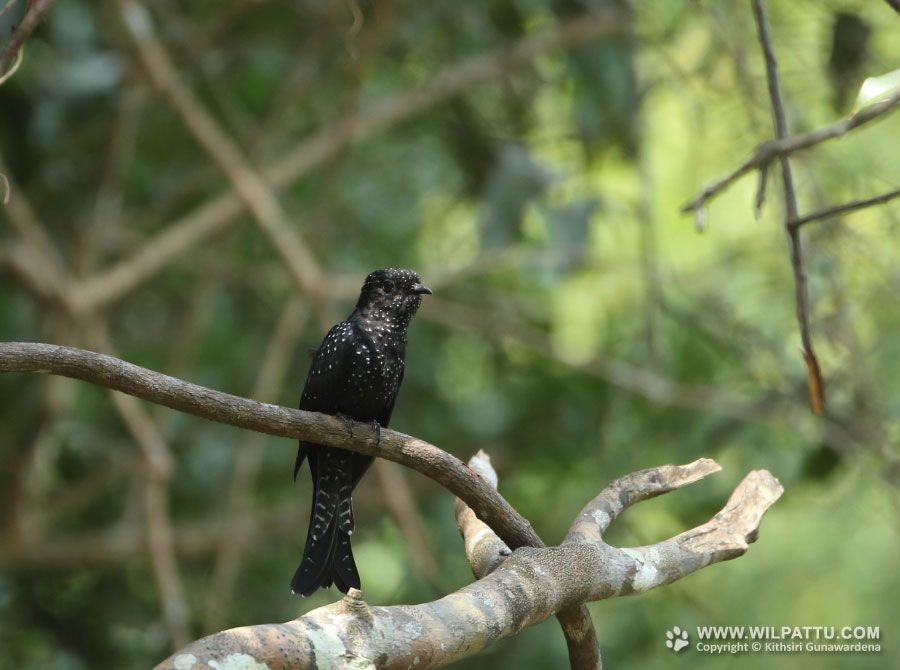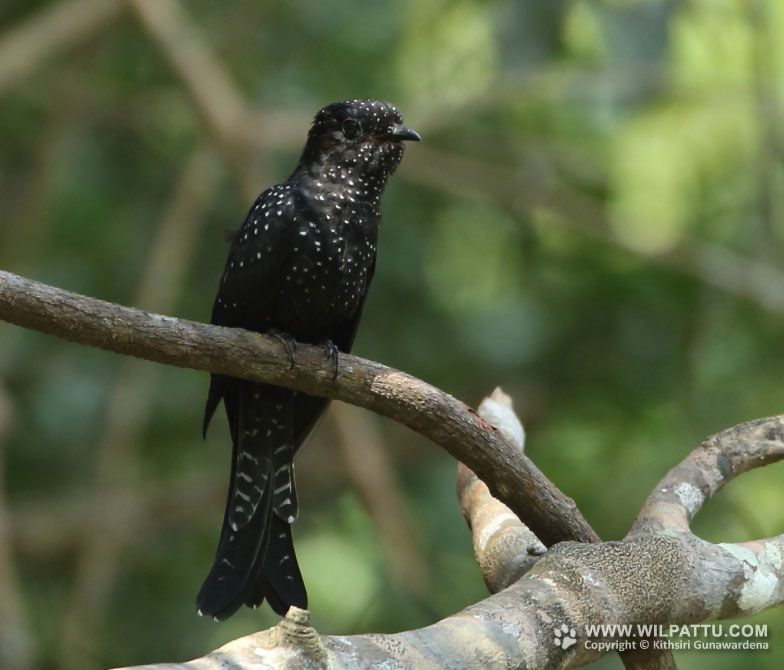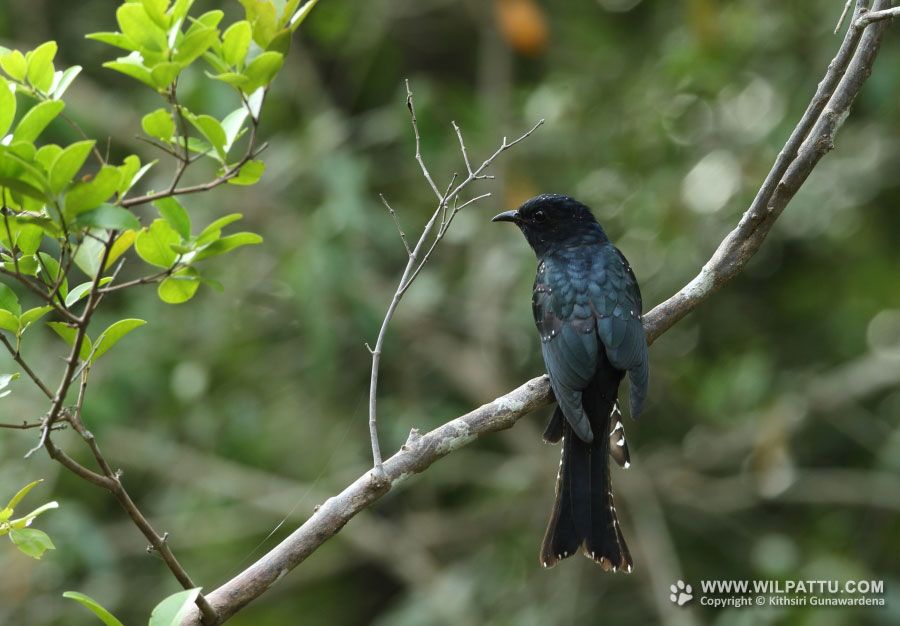
Birds ‹‹ Go Back
This is a widespread breeding resident found from the lowlands to the higher hills. The birds with deeply forked tails are believed to be of the migrant race dicruroides. They are summer visitors to the Himalayas from Kashmir to eastern Bangladesh.
The birds with shallow forked tails are believed to be of the race lugubris that breeds in the country. The resident race is found in Sri Lanka and South-East Asia.
The conservation status of the species under reference is regarded as Near Threatened (National Red List 2012).
This is a species protected under the Fauna and Flora Protection Ordinance as amended by Act No. 22 of 2009.
I have observed these birds mostly in the forested areas in the lowlands and the mid hills of the country. They resemble the Black Drongo but can be differentiated by their flight, the structure of the beak, the white-barred under-tail coverts and the under-tail.
They are common in most dry zone national parks such as Gal Oya, Wasgomuwa, Minneriya, Maduru Oya and Yala. These birds are found in open savannah type forested areas even outside protected areas in Sigiriya, Arankele, Dolukanda, Monaragala and Laggala and in rubber plantations close to such forests in localities such as Badalkumbura.
In the wet zone I have seen this species at Kitulgala- Kelani Valley Forest Reserve, Knuckles Nitre Cave area and in the Western Province at Jalthara. The highest altitude at which I have recorded this species so far has been at Meemure in the Knuckles at 1,310 meters above sea level.
This species is known to lay their eggs in the nests of Black-fronted Babblers and the immature, as depicted in the photographs, are covered with white spots, which disappear as the birds reach maturity.
In Wilpattu this species is found throughout the Park. Its ascending six-note call is often heard during the breeding season from about late December until March. This is a bird that is usually found in the canopy and is a difficult bird to photograph.



